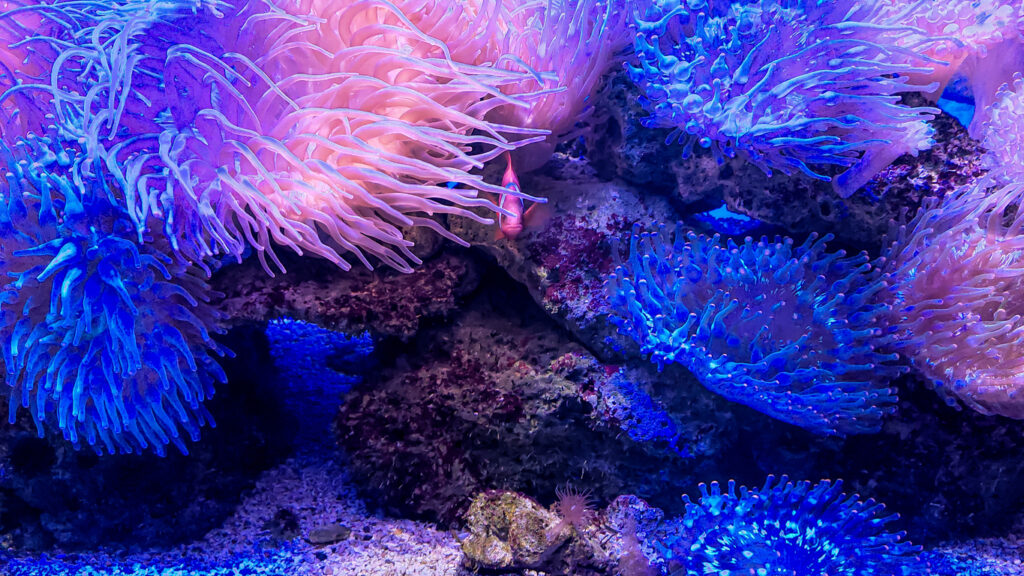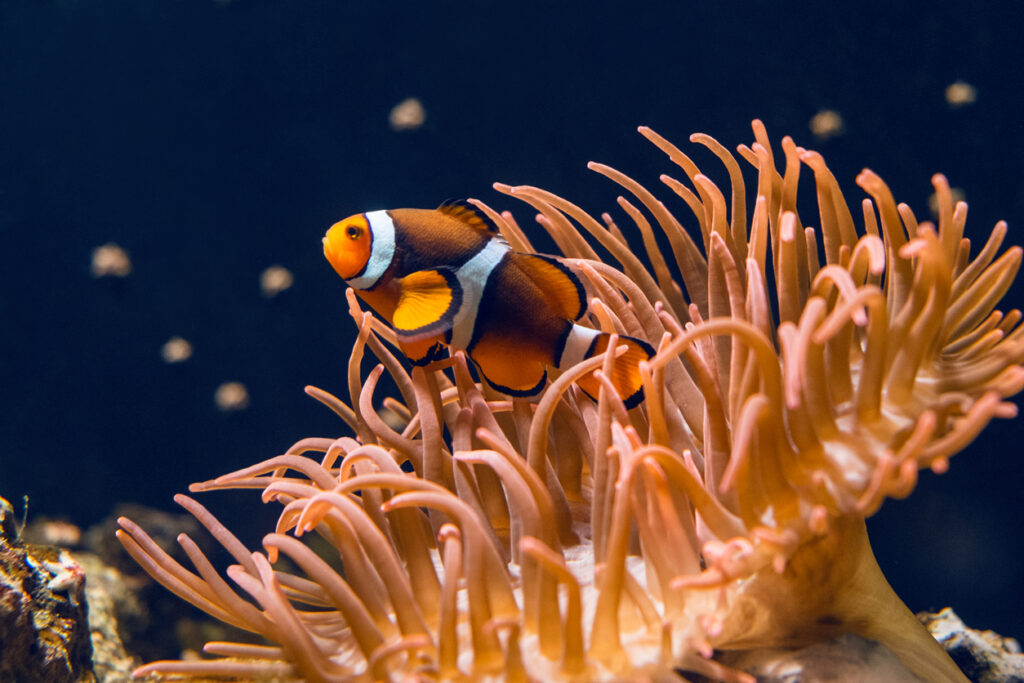The world’s oceans are home to some of the most fascinating creatures, from fish to coral. One of the most interesting animals that live in oceans throughout the world is the sea anemone. Sea anemones are often mistaken for plants, given their appearance, not to mention that they are named after the anemone flower. Characterised by brightly coloured tentacles, these sea creatures have a lot to offer.
So, what exactly is a sea anemone and what makes them so unique? Let’s dive in and find out!
What does a sea anemone look like?
The sea anemone (Actiniaria) is part of a family of aquatic animals distinguished by soft bodies and the ability to sting. With that in mind, they are close relatives to creatures like coral and jellyfish. There are over 1,000 species spanning the world’s oceans, and they come in a whole spectrum of bright colours.
To be more precise, sea anemones are polyps, which means they have a cylindrical-shaped body with a central mouth. This mouth is surrounded by a variable number of tentacles, giving them a plant-like appearance.
Sea anemones have a sticky foot or disc that allows them to anchor to rocks on the sea bottom or on coral reefs, which is where they typically spend most of their time. However, some species are also known to live in shallow waters too. Most species are found in coastal tropical waters and vary in size; some are as small as half an inch (12cm), while others can grow up to 6 feet (182cm).
The different species have some interesting and plant-like names, too. Strawberry Anemones (Actinia fragacea) are bright red in colour and covered with green spots, while Dahlia Anemones (Urticina feline) are typically larger in size while being much more variable in colour. The size, colour and even shape of sea anemones can vary quite a lot depending on where in the world they live.

Do sea anemones swim?
Generally, sea anemones can move by flexing and contracting their bodies, giving a floating or swimming appearance. However, sea anemones will typically find somewhere they’re comfortable and anchor themselves, with many staying in one place for the duration of their lifetime. This is another reason why people mistake them for plants!
If a change in environment occurs, sea anemones will move by using a flexing and contracting motion to find a suitable new place to anchor. An example of this would be when sea temperatures rise and fall since this can affect the number of prey available. If you’ve ever seen a sea anemone move, it’s truly fascinating to watch!
What do sea anemones eat?
Sea anemones are predatory animals, but instead of hunting for their food, they will wait patiently on their rock or coral reef for their prey to pass by. They are carnivores, and feed on the likes of tiny plankton and fish, but larger anemones have also been known to eat starfish and crabs.
The tentacles of sea anemones, while they may look pretty, are the perfect tool for capturing prey. When a fish swims by, the tentacles fire a filament and paralyse their meal with a venomous injection. The tentacles then pass the fish, plankton or other animal directly to the sea anemone’s mouth.
This method also serves as a great defence system, which means that sea anemones don’t really have many predators. However, while most species aren’t threatened by other sea creatures, some animals such as sea snails and turtles aren’t deterred by the stinging tentacles and have been known to successfully feed on anemones.
Sea anemones have a special relationship with other sea creatures
If you’ve ever seen Finding Nemo, you might be confused as to why the fish are able to live amongst sea anemones given their paralysing capabilities. This is because some anemones have a special relationship with certain species, creating a mutually beneficial connection. In particular, sea anemones have been known to forge relationships with clownfish (think Nemo and his dad). Clownfish are protected by a layer of mucus that prevents them from being stung by the anemone, allowing them to live safely in the tentacles and shelter from predators. In return, the sea anemone snacks on scraps and leftovers from the clownfish’s meals!

Similarly, sea anemones have a special relationship with green algae. The algae gains safe harbour and protection from sunlight thanks to the sea anemone’s tentacles, while the algae provides oxygen and sugar to the anemones. They do this through the process of photosynthesis.
Some species of sea anemones also have a relationship with Hermit crabs. The anemone will attach itself to the crab’s shell and be carried around to find more food, while the crab uses the anemone as protection from its predators. This is because the crab looks just like a stone or rock with the anemone on top, camouflaging it nicely.
Fun facts about sea anemones
There’s no doubt that sea anemones are fascinating creatures, and there’s still a lot more to learn! Here are some more facts about these colourful animals.
- Sea anemones have no eyes or ears and rely on their tentacles to sense and capture their meals.
- What’s more, sea anemones also have no skeleton and no brain! Instead, they have a decentralised nervous system.
- Sea anemones have been known to live up to 100 years, and sometimes even longer. This makes them one of the longest-living marine creatures. What’s more, sea anemones can clone themselves. They do this through asexual reproduction, where the anemone’s body breaks into two. Sea anemone can also reproduce sexually and will do so every couple of days.
- Because of their ability to clone themselves and their lack of predators, sea anemones are not typically a vulnerable species.
- Beadlet anemones are a common sight in rockpools around the UK, characterised by a rusty red colour and length of up to 5cm.
- While sea anemones aren’t toxic to humans, it’s still not safe to touch them – just in case!
So there you have it! These flowers of the sea are not only beautiful, but they’re also an important part of marine life. See if you can spot sea anemones or their clownfish companions in our Solent Seas and Tropical Treasures exhibits today! Book your tickets online and visit Blue Reef Aquarium Portsmouth to discover more about our wonderful sea creatures.
